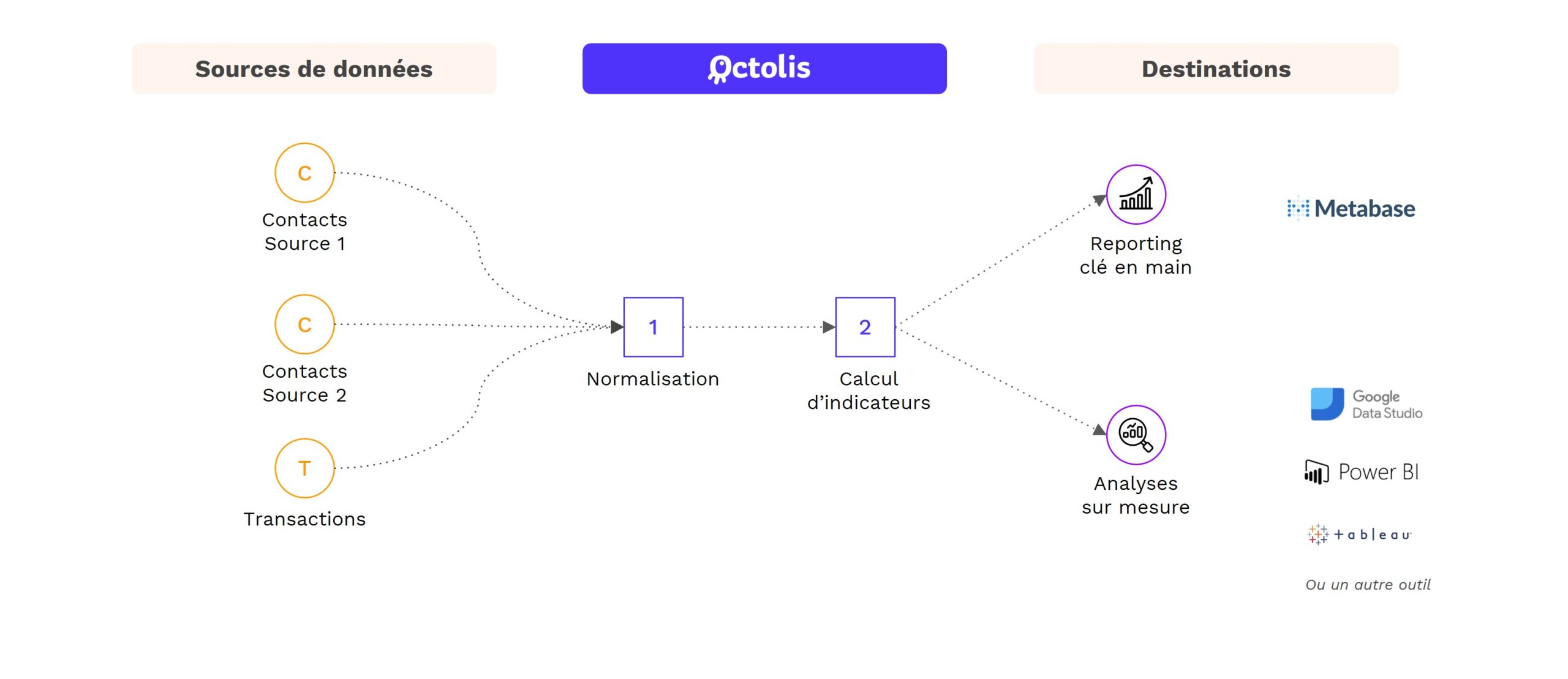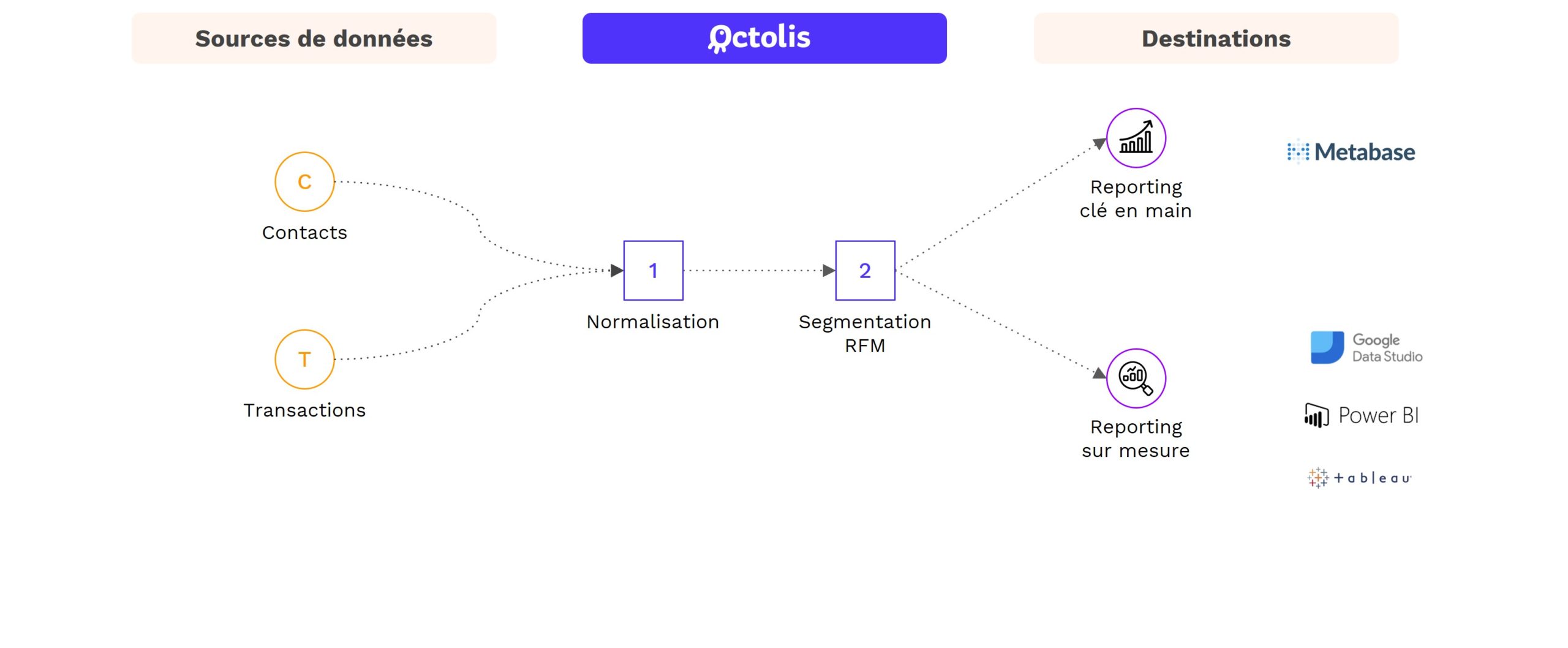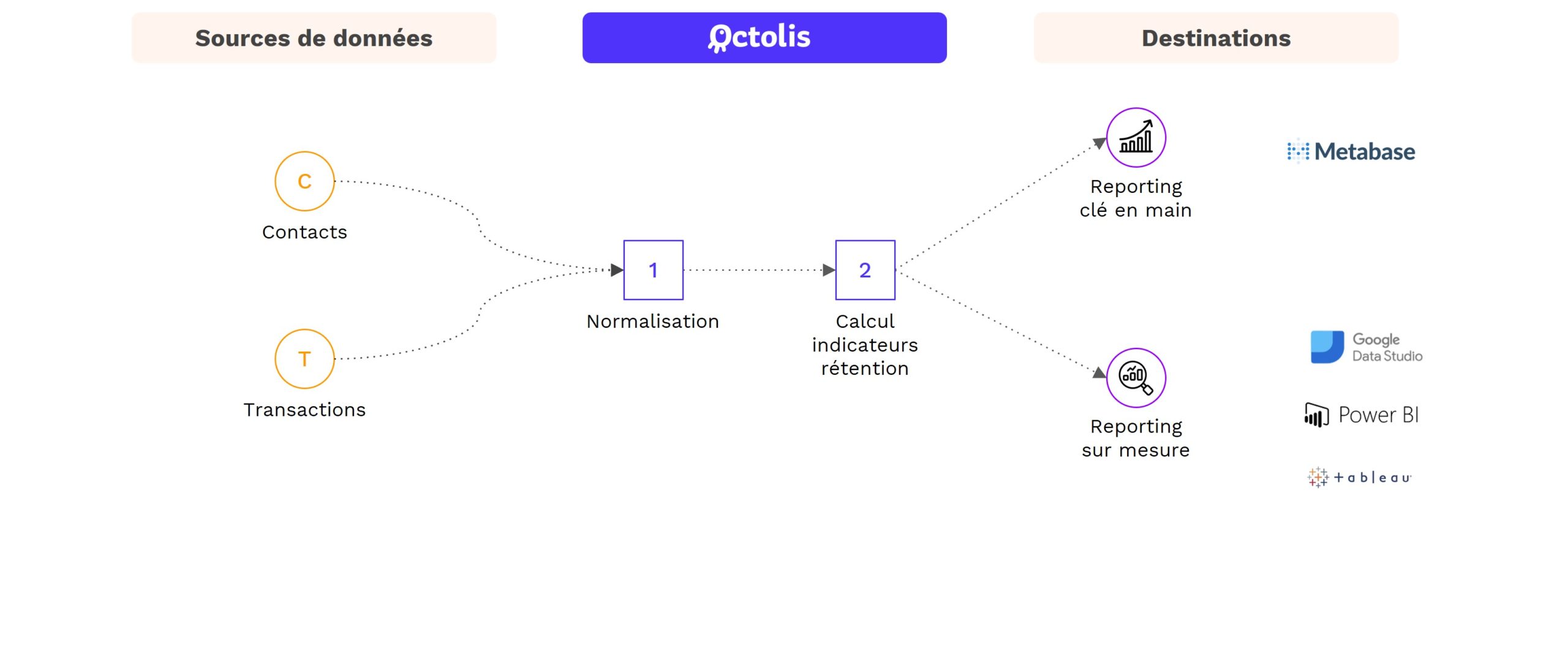There are several interests to have a solid base for customer knowledge:
- Know the main characteristics of your customer base
- Identify opportunities on certain segments
- Measure the impact of your actions
Thanks to Octolis, you have the two pillars of customer knowledge at your disposal:
- Complete update reporting automatically
- Capacity to answer ad-hoc questions
Standard reporting on customer knowledge makes it possible to answer questions like:
- Who are my customers: age, gender, geographic distribution, etc.
- To what extent my customer base is usable: completion level of the main fields, distribution of optins, etc.
- What is their purchasing behavior: decomposition according to the number of purchases, evolution frequency of purchase, cumulative CA monitoring according to different characteristics, etc.





